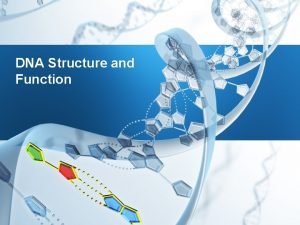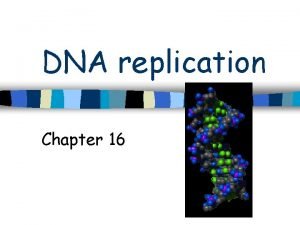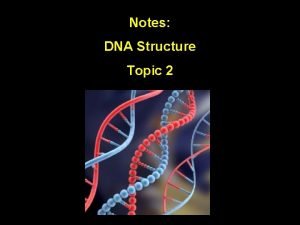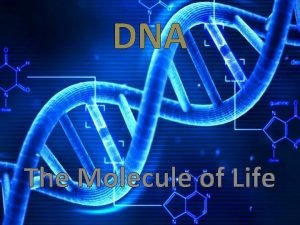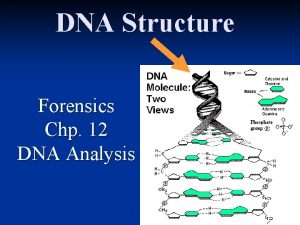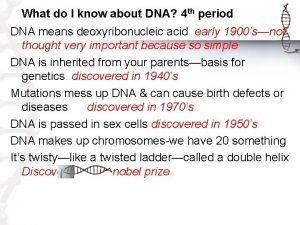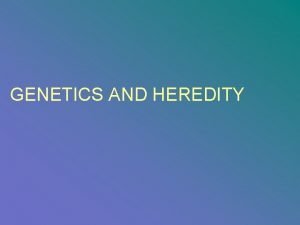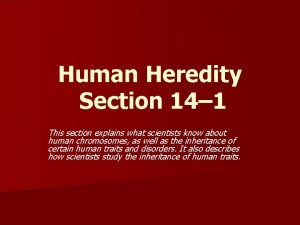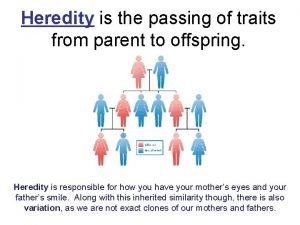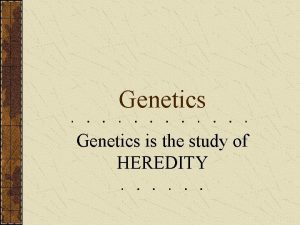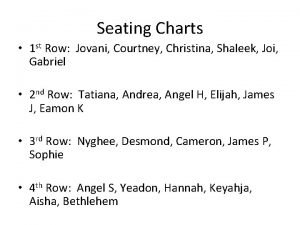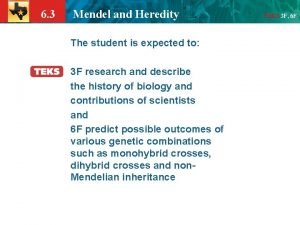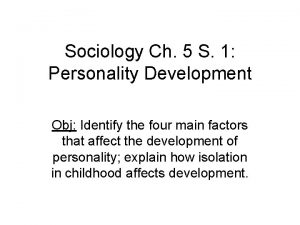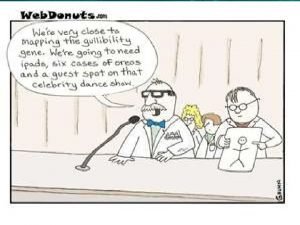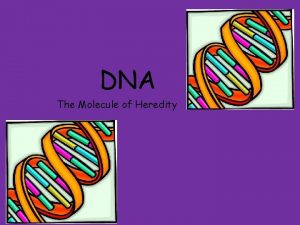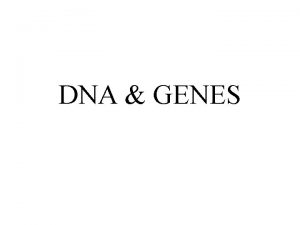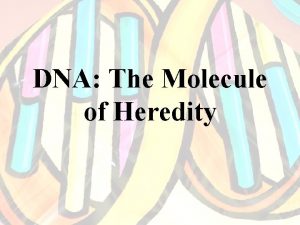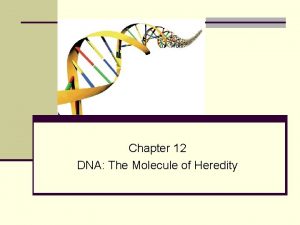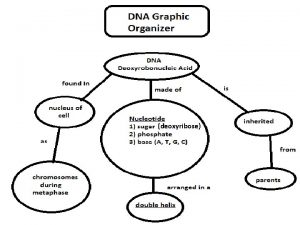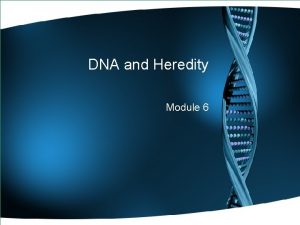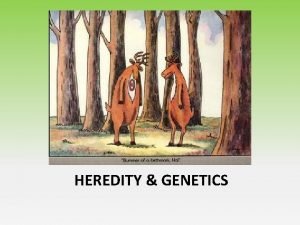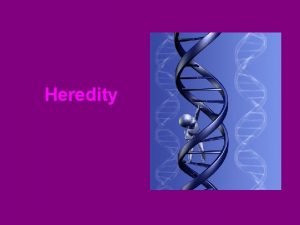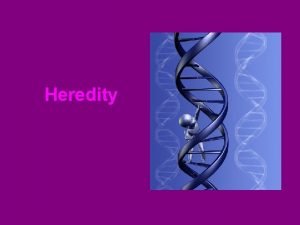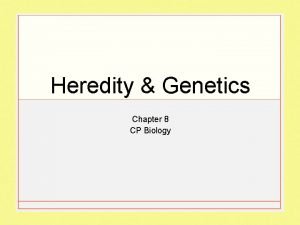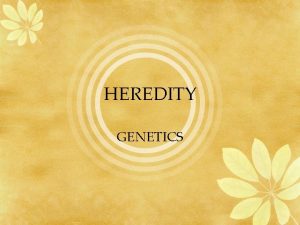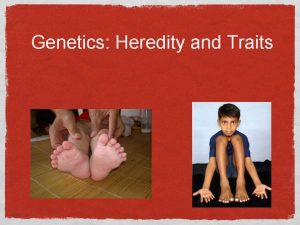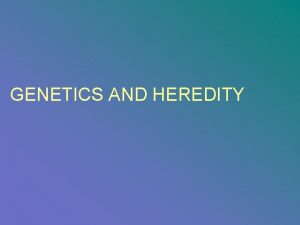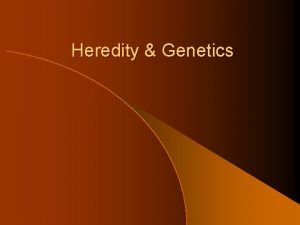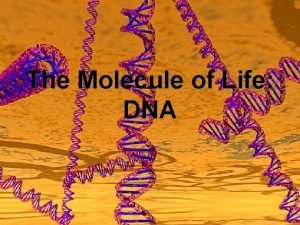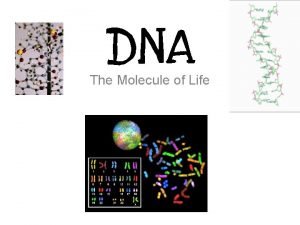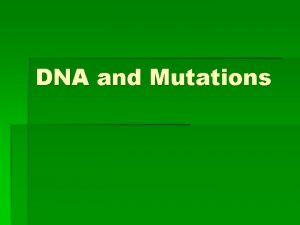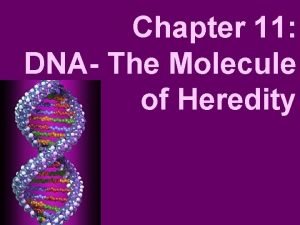DNA The Molecule of Heredity What is DNA





















- Slides: 21

DNA – The Molecule of Heredity

What is DNA? • Although the environment influences how an organism develops, the genetic information that is held in the molecules of DNA ultimately determines an organism’s traits.

What is DNA? • DNA achieves its control by determining the structure of proteins.

What is DNA? • All actions, such as eating, running, and even thinking, depend on proteins called enzymes.

What is DNA? • Enzymes are critical for an organism’s function because they control the chemical reactions needed for life.

What is DNA? • Within the structure of DNA is the information for life—the complete instructions for manufacturing all the proteins for an organism.

DNA as Genetic Material • In 1952 Alfred Hershey and Martha Chase performed an experiment using radioactively labeled viruses that infect bacteria. • These viruses were made of only protein and DNA.

DNA as Genetic Material • Hershey and Chase labeled the virus DNA with a radioactive isotope and the virus protein with a different isotope. • By following the infection of bacterial cells by the labeled viruses, they demonstrated that DNA, rather than protein, entered the cells and caused the bacteria to produce new viruses.

The Structure of Nucleotides • DNA is a polymer made of repeating subunits called nucleotides. Nitrogenous base Phosphate group Sugar (deoxyribose) • Nucleotides have three parts: a simple sugar, a phosphate group, and a nitrogenous base.

The Structure of Nucleotides • The simple sugar in DNA, called deoxyribose, gives DNA its name —deoxyribonucleic acid. Nitrogenous base Phosphate group Sugar (deoxyribose) • The phosphate group is composed of one atom of phosphorus surrounded by four oxygen atoms.

The Structure of Nucleotides • A nitrogenous base is a carbon ring structure that contains one or more atoms of nitrogen. Adenine (A) Guanine (G) Cytosine (C) Thymine (T)

The Structure of Nucleotides Adenine (A) Guanine (G) Cytosine (C) Thymine (T) • In DNA, there are four possible nitrogenous bases: adenine (A), guanine (G), cytosine (C), and thymine (T).

The Structure of Nucleotides • Thus, in DNA there are four possible nucleotides, each containing one of these four bases. Adenine (A) Guanine (G) Cytosine (C) Thymine (T) • For this class… the NAMES are more important than the SHAPES.

The Structure of Nucleotides • Nucleotides join together to form long chains, with the phosphate group of one nucleotide bonding to the deoxyribose sugar of an adjacent nucleotide.

The Structure of Nucleotides • The phosphate groups and deoxyribose molecules form the backbone of the chain, and the nitrogenous bases stick out like the teeth of a zipper.

The Structure of Nucleotides • In DNA, the adenine is always paired with thymine, and guanine is always paired with cytosine. Adenine (A) Thymine (T) Straights A-T Cytosine (C) Guanine (G) & & Curves C-G

The Structure of DNA • In 1953, Watson and Crick proposed that DNA is made of two chains of nucleotides held together by nitrogenous bases.

The Structure of DNA • Watson and Crick also proposed that DNA is shaped like a long zipper that is twisted into a coil like a spring.

The Structure of DNA • Because DNA is composed of two strands twisted together, its shape is called double helix.

The Importance of Nucleotide Sequence • The sequence of nucleotides forms the unique genetic information of an organism. The closer the relationship is between two organisms, the more similar their DNA sequences.

The Importance of Nucleotide Sequence • Scientists use nucleotide sequences to determine evolutionary relationships among organisms, to determine if two people are related, and to identify dead bodies.
 Ikatan hidrogen
Ikatan hidrogen What did frederick griffith discover
What did frederick griffith discover Dna molecule two views
Dna molecule two views Which organism
Which organism Is dna a nucleic acid
Is dna a nucleic acid Dna prokaryotic
Dna prokaryotic Dna the molecule of life
Dna the molecule of life Dna molecule two views
Dna molecule two views Dna molecule
Dna molecule Chapter 11 human heredity section 11-3
Chapter 11 human heredity section 11-3 Chapter 17 lesson 2 heredity and genetics
Chapter 17 lesson 2 heredity and genetics Heredity
Heredity Heredity
Heredity 14-1 human heredity
14-1 human heredity What is regeneration
What is regeneration Section 3 mendel and heredity
Section 3 mendel and heredity ____________ is the study of heredity.
____________ is the study of heredity. Susie roundpants
Susie roundpants Early ideas about heredity
Early ideas about heredity Mendel 9 3 3 1
Mendel 9 3 3 1 Heredity characteristics include body build
Heredity characteristics include body build Section 3 mendel and heredity
Section 3 mendel and heredity
